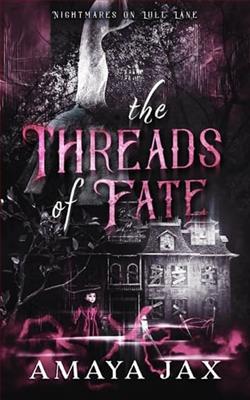Page 69 of Claimed By My Exiled Alphas
Hollis approached the lane with careful consideration, his ball rolling straight and true down the center. Nine pins fell. His spare attempt took out the tenth cleanly.
“Adequately mediocre, huh?” I said. “That was suspiciously competent.”
“I may have downplayed my abilities slightly.”
“Sandbagger. I love it.” I turned to Cassian. “Your turn. Show us what Princeton prep school bowling club taught you.”
“We didn’t have a bowling club. We had crew and lacrosse and activities that looked good on college applications.” But he stood, selected his ball, and approached the lane with intense focus.
His form was technically perfect. Textbook approach, smooth release, good follow-through. The ball rolled straight down the center of the lane in a mathematically precise line.
And went directly into the gutter six inches before the pins.
Hollis and I both stared.
“How did you do that?” I asked. “You had perfect form. That should have been a strike.”
“I don’t know. The ball didn’t go where I intended.” Cassian looked genuinely baffled, like the laws of physics had personally betrayed him.
His second attempt produced the same result. Perfect form, gutter ball.
“Okay,” I said, trying not to laugh. “So we’ve identified an area for improvement.”
“I’m analytically aware that the ball needs to go toward the pins,” Cassian said, frustrated. “The execution appears to be the issue.”
“Here.” Hollis stood and moved beside him. “You’re releasing too early. Watch Jace’s approach again.”
I demonstrated again, and Hollis pointed out the specific moment of release. Cassian studied this with the same intense focus he probably applied to contractor negotiations.
His third attempt knocked down five pins.
“Progress!” I celebrated perhaps too enthusiastically. “You’re doing it!”
“I only knocked down half the pins. That’s definitionally not doing it.”
“It’s fifty percent more than you knocked down before. That’s statistically significant improvement.”
We fell into a rhythm. Hollis and I traded consistent scores, neither of us excellent but both competent. Cassian gradually improved from “disastrously terrible” to “endearingly bad,” with occasional frames where he’d surprise us all by getting a spare.
“This is humbling,” he said after his fourth gutter ball. “I’m accustomed to being good at things I attempt.”
“Everyone needs a humility hobby,” Hollis said. “Mine is gardening. I kill approximately thirty percent of everything I plant.”
“That’s actually a pretty good survival rate for plants,” I offered.
“It’s terrible. My grandmother would be horrified.”
By the fourth frame, we’d started talking about things beyond bowling. Cassian asked about my ranger work, specifically about wildlife management protocols. Hollis told us about a rare book collection that had come into the store. I shared the story about the tourist who’d tried to take a selfie with a black bear cub and nearly got mauled by the mother.
“People are idiots about wildlife,” I said, retrieving my ball. “They see a cute animal and forget it’s a wild predator with no interest in being Instagram famous.”
“Same principle applies to business,” Cassian said. “People see a beautiful location and forget the ecosystem required tokeep it that way. Then they’re surprised when their development destroys exactly what made the place valuable.”
“Is that what happened with your family’s project?” Hollis asked carefully.
Cassian was quiet for a moment, lining up his next throw. He knocked down eight pins this time, his best result yet.
“My family saw profit margins and property values. They didn’t see the watershed or the wildlife corridors or the community that had existed here for generations.” He retrieved his ball for the spare attempt. “I tried to explain it to my father. Multiple times. He said I was being sentimental and naive.”















